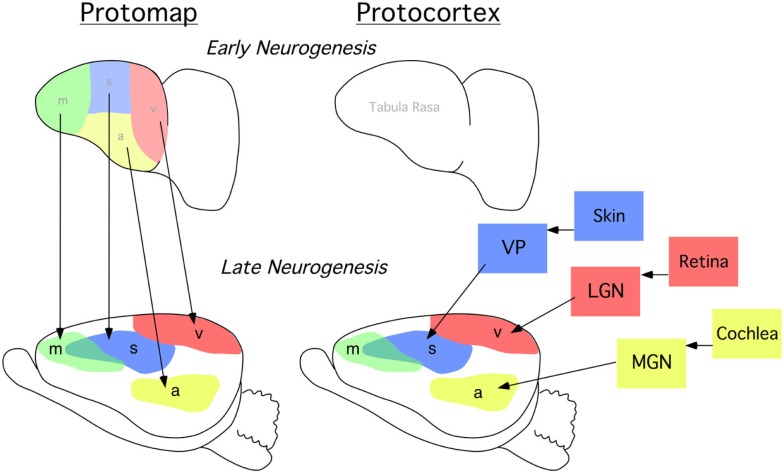Figure 1.
Classic models of cortical patterning. Lateral view of cortical primordium at an early stage of neurogenesis (top row), and a later stage after thalamocortical axons have begun to enter the cortical plate when putative cortical sensory and motor areas are forming (bottom row). (Left) simplified protomap model. Early neocortex is patterned by predetermined molecular gradients across the developing cortex. Areal distinctions arise as specified by molecular determinants and these cortically intrinsic factors impart positional areal information. This is an activity-independent process. (Right) simplified protocortex model. Early neocortex is considered a blank slate, i.e., “tabula rasa.” Area differences arise based on sensory input from axons originating from the dorsal thalamus. Cortical cells and regions are “assigned” sensory and motor territories based on thalamic input. This is an activity-dependent process. m, putative motor cortex; s, putative somatosensory cortex, v, putative visual cortex; a, putative auditory cortex; VP, represents the ventral posterior nucleus of the dorsal thalamus which receives somatosensory input from receptors in the skin via brainstem nuclei; LGN, represents the lateral geniculate nucleus of the dorsal thalamus which receives visual input from the retina; MGN, represents the medial geniculate nucleus which receives auditory input from the cochlea.

